Lumoz provides a modular computation layer for ZK Rollup, adopting a hybrid consensus mechanism of PoS and PoW.
By ZeY
Abstract
Ethereum has been facing scalability issues since its inception. Scalability remains a key technology for achieving Web3 Mass Adoption. Rollup is the mainstream Layer2 scalability solution, and its core idea is to publish "packaged" transaction data blocks on the chain, thereby reducing the difficulty of transaction validity verification. Depending on the method of data validity verification, Rollups can be further subdivided into Optimistic Rollups and ZK Rollups.
The pain points currently faced by the ZK Rollups track mainly include three aspects: the high cost of computing ZKPs, and currently, most zk rollups rely on centralized Provers; the complexity of zero-knowledge technology makes it difficult to build ZK-rollup compatible with EVM; in addition, many ZK Rollups currently use third-party bridging projects for interaction, posing certain security risks.
NanFeng, co-founder and CEO of Lumoz, graduated from Tsinghua University, and the core team has been dedicated to ZK technology for nearly five years since 2018. From the beginning, Lumoz has been committed to making zero-knowledge computation more efficient and accessible.
Lumoz has completed two rounds of incentive testnets, with a total of 282K participants, 28,137 Validators, 145 PoW miners, and over 60 deployed ecosystem projects. In May 2024, Lumoz announced the completion of a new round of strategic financing, with a valuation of 3 billion US dollars. As of now, Lumoz has raised a total of 14 million US dollars, with investment institutions including OKX Venture, Hashkey Capital, Polygon, Kucoin Ventures, IDG Blockchain, Gate Ventures, SevenUpDAO, Sweep Ventures, and others.
Lumoz provides a modular computation layer for ZK Rollup, adopting a hybrid consensus mechanism of PoS and PoW. The ZK-PoW algorithm network greatly reduces the cost of ZKP computation, while also addressing the issue of centralized Provers. It also introduces zkVerifier to verify the ZKPs generated by zkProver. The hardware requirements for zkVerifier nodes are relatively low, and the upcoming Node Sale will make the verification network more decentralized and resistant to censorship.
Lumoz's RaaS Launch Base is highly compatible with mainstream ZK Rollups technology stacks, including Polygon zkEVM, zkSync, Scroll, Starknet, etc. It is currently the most widely compatible project with ZK Rollups technology stacks on the market, and can specifically address the compatibility pain points between ZK technology and EVM in ZK Rollup, providing one-click chain deployment to meet the customized ZK Rollup needs of projects. Current clients include: ZKFair, Merlin Chain, Coin98, Ultiverse, Mari1x, Fortnite(Efuse), Viction, and others.
Lumoz's proposed NCRC Protocol achieves seamless cross-chain interoperability among multiple ZK Rollups through "Native Bridge," while users' assets do not pass through any third-party protocols, making the entire process secure and trustless.
Lumoz adopts a dual-token economic model, where the utility token MOZ can be used for transaction fees and resource usage fees, while the equity token esMOZ is a reward for participants and can also be used to delegate zkVerifier nodes. esMOZ tokens can be exchanged for MOZ tokens at different redemption periods and redemption rates. Currently, Lumoz has not disclosed the latest token distribution in its project whitepaper.
Looking ahead, the development prospects of the RaaS track are promising, and ZK Rollup will also become the mainstream solution for Rollup, while community operations and ecosystem development may replace technology as the main challenge in building Rollup. With its deep expertise in ZK technology, Lumoz is expected to continue to be a leader in ZK RaaS, further promoting the large-scale application and popularization of ZK-Rollup technology.
I. Background
1. Rollup Scalability Solution
Ethereum has been facing scalability issues since its inception. Scalability remains a key technology for achieving Web3 Mass Adoption.
Scalability solutions built on Ethereum without the need to modify the underlying Layer 1 protocol are referred to as Layer 2 solutions. These solutions can process transactions without interacting with the Ethereum network and anchor their security in Ethereum's Layer 1 through smart contracts, as if an additional layer of network were added off-chain, hence the name Layer2. According to L2 Beat's data, the current number of transactions processed by L2 has reached 10 times that of the Ethereum mainnet, greatly expanding Ethereum's limited transaction processing capacity.
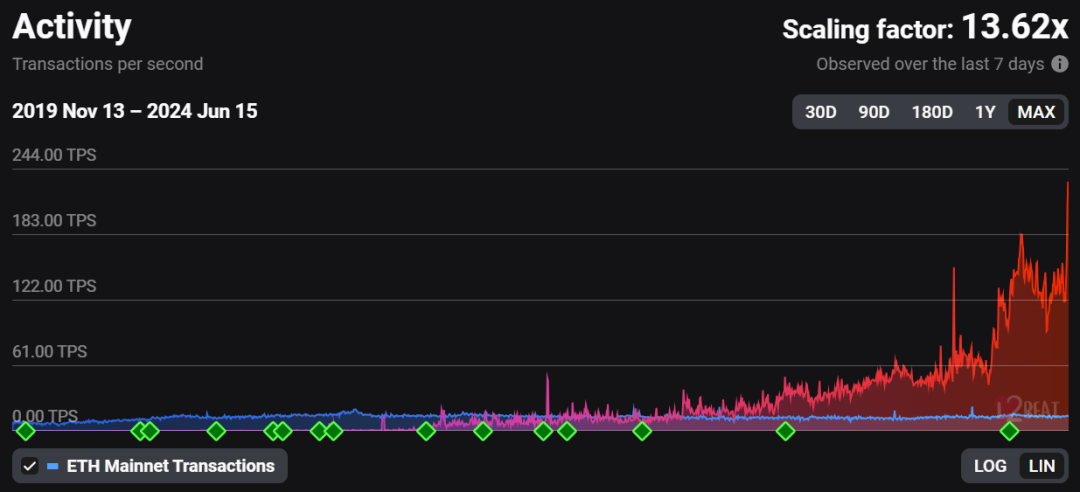
Figure 1 Number of transactions processed by Layer2 https://l2beat.com/scaling/activity
As a highly decentralized public blockchain, Ethereum has become very congested, and gas has become extremely expensive. Therefore, an increasing number of decentralized applications, including Defi, Gamefi, and others, are migrating their protocols to these Layer2 solutions to optimize user experience and reduce operating costs. According to L2 Beat's data, as of June 16, 2024, the total locked value of all L2 has reached 12.4418 million ETH, equivalent to approximately 443.63 billion US dollars. By comparison, the locked value on the Ethereum mainnet is 17.88 million ETH, equivalent to approximately 656.34 billion US dollars, meaning that the total locked value of all L2 is close to 70% of the locked value on the Ethereum mainnet.
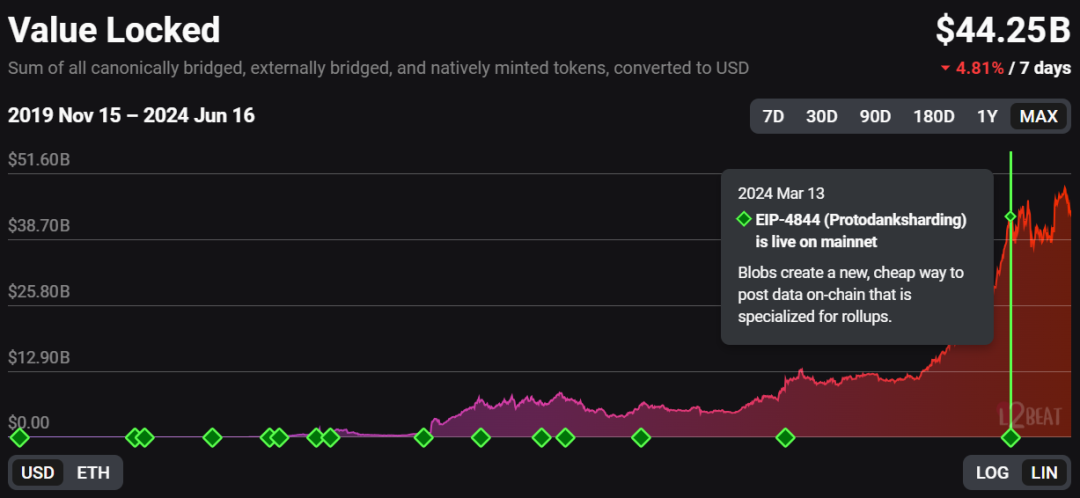
Figure 2 Total locked value of Layer2 https://l2beat.com/scaling/summary
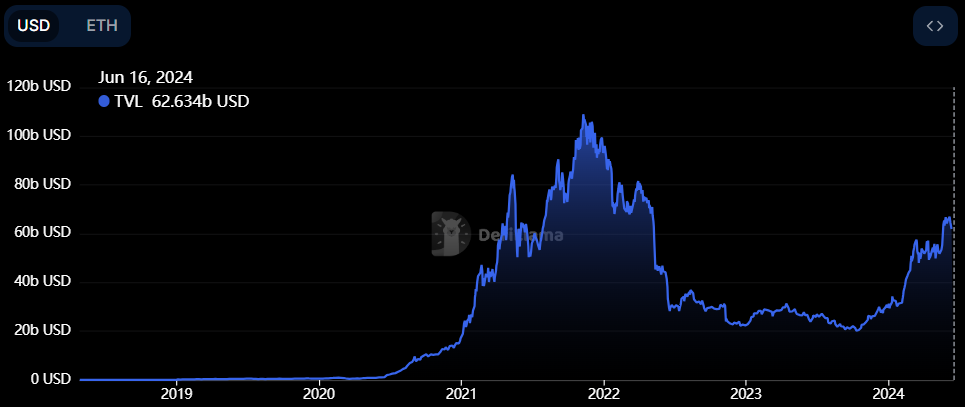
Figure 3 Locked value on the Ethereum mainnet
https://defillama.com/chain/Ethereum?currency=USD
Rollup is the mainstream Layer2 scalability solution, and its core idea is to publish "packaged" transaction data blocks on the chain, thereby reducing the difficulty of transaction validity verification. Rollup technology addresses the problems exposed by previous Plasma, providing the same data availability and security as Ethereum Layer 1 (i.e., Ethereum itself), and greatly improving network throughput while reducing the cost of individual transactions. In a modular blockchain architecture, the Rollup solution effectively outsources the chain's execution layer (and other layers).
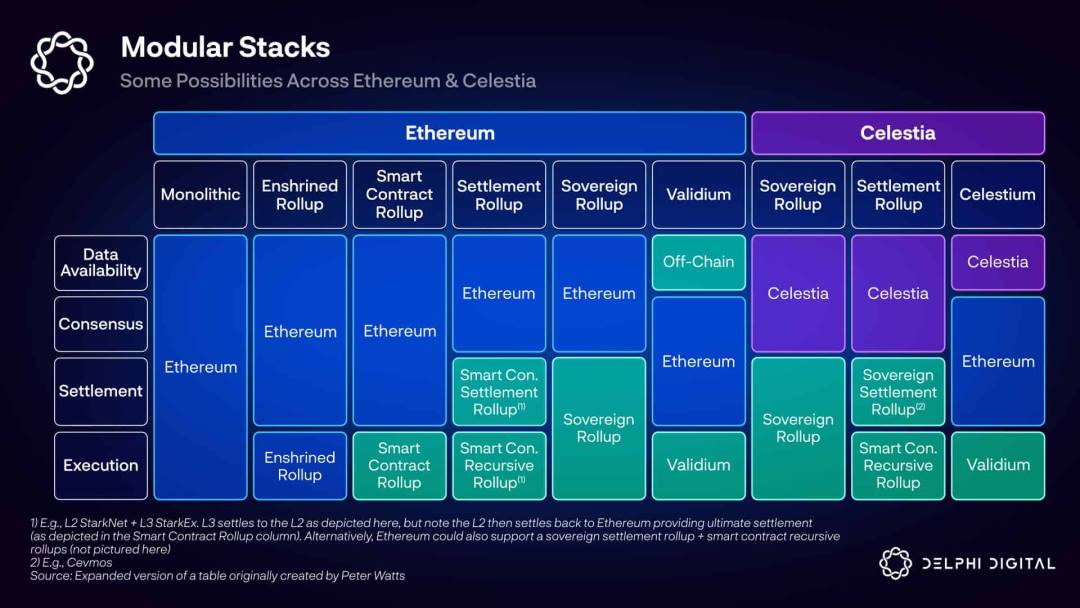
Figure 4 Modular technology stack Modular Stacks
https://members.delphidigital.io/reports/the-complete-guide-to-rollups
2. Two Rollup Solutions: ZK Rollups vs. Optimistic Rollups
Depending on the method of data validity verification, Rollups can be further subdivided into Optimistic Rollups and ZK Rollups.
Optimistic Rollups rely on an "optimistic" assumption that most transactions are valid and allow for challenges and rollbacks when fraudulent behavior is detected. ZK Rollups, on the other hand, use zero-knowledge proof technology (ZK) to ensure that off-chain processed transactions are valid and correct, providing higher security and efficiency. The main advantages and disadvantages of the two Rollup solutions are shown in the table below:
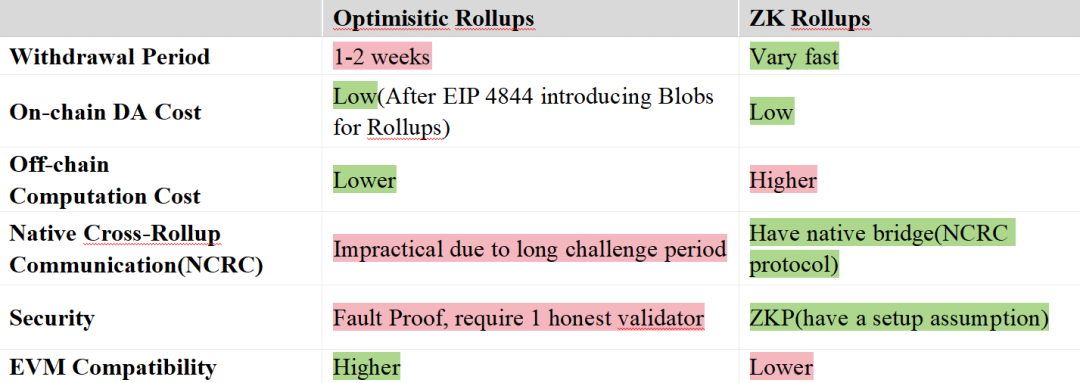
Table 1 ZK Rollups vs. Optimistic Rollups
Source: Compiled by the author based on existing literature
Although ZK-Rollup has many advantages and is considered by Vitalik as a long-term Ethereum scalability solution, its current widespread adoption is limited by many technical challenges. According to Defilama data, as of June 16, 2024, Optimistic Rollups such as Arbitrum, Blast, Base, and Optimism still dominate the Rollups space.
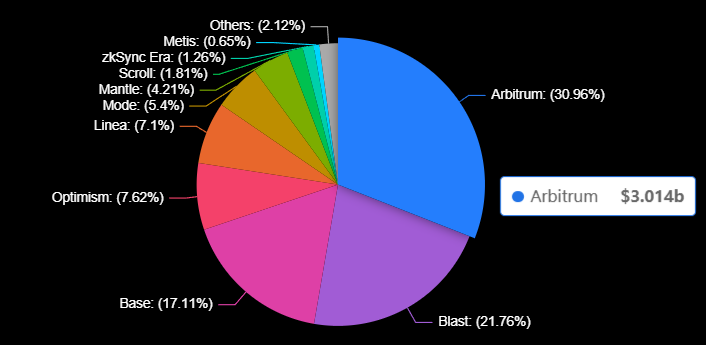
Figure 5 TVL pie chart of the Rollup track https://defillama.com/chains/Rollup
3. Pain Points of ZK Rollups Track
Specifically, the current pain points faced by the ZK Rollups track are:
1. The high cost of computing ZKPs, and currently, most zk rollups rely on centralized Provers.
Currently, there are multiple zk-rollups running on the Ethereum mainnet, including the Polygon zkEVM and zkSync eras. For a ZK-Rollup, the cost of computing ZKPs far exceeds the cost of data availability (DA) computation, even accounting for more than 50% of the total cost. Moreover, most of these ZK-Rollup projects have not implemented decentralized proof procedures. For example, in the beta mainnet of Polygon zkEVM, it relies on a trusted aggregator to submit ZKPs, and the zkSync era follows a similar approach.
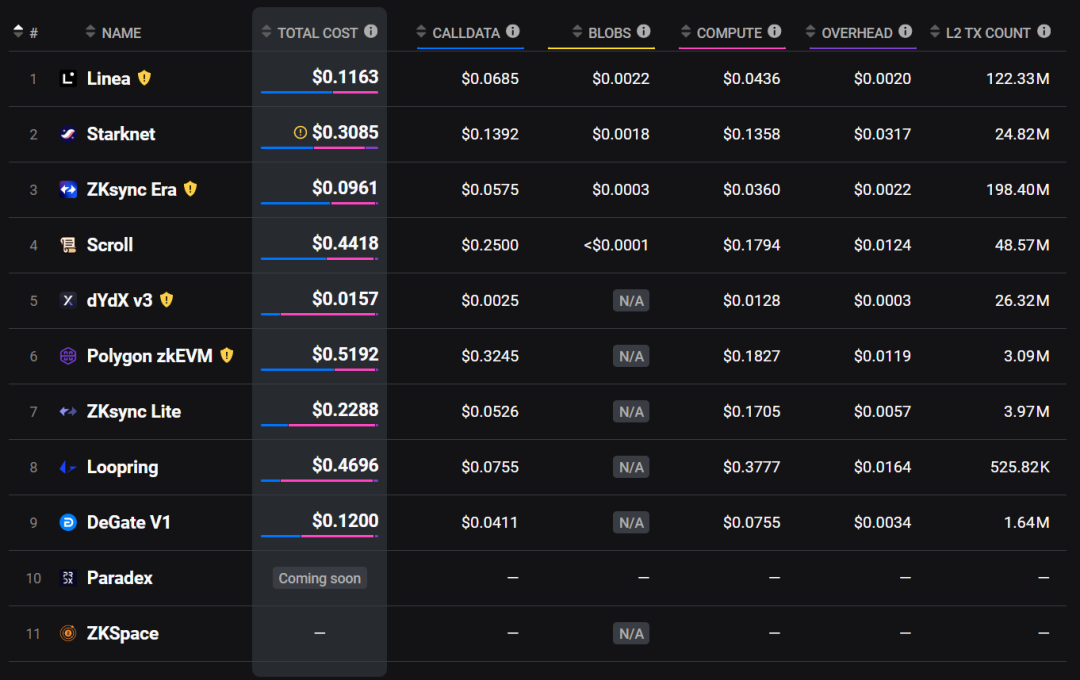
Figure 6 High cost of computation in mainstream ZK Rollups (pink in the figure)
https://l2beat.com/scaling/costs
2. The complexity of zero-knowledge technology makes it difficult to build ZK-rollup compatible with EVM.
EVM compatibility refers to translating smart contract code in Solidity into specific virtual machine bytecode for ZK Rollup. The EVM design did not initially consider compatibility with zero-knowledge proof technology. For example, in order for any program executed by EVM to generate a valid proof through zk-SNARKs, a corresponding mathematical representation and proof logic need to be created for each opcode of EVM. This not only requires complex cryptographic transformations but also presents challenges for the compatibility of existing smart contracts.
3. In addition, many ZK Rollups currently use third-party bridging projects for interaction, posing certain security risks.
In this era of multiple Rollups, the coexistence of various Rollups makes seamless interoperability between different Layer 2 solutions increasingly important. Existing cross-Rollup bridging solutions typically involve deploying new inter-chain contract sets on Rollup chains and using multi-chain liquidity incentives to achieve cross-chain asset functionality. However, these solutions are not universally applicable to message-based cross-chain interactions and carry risks of centralization and trust. In July 2023, Binance-backed cross-chain bridge project Multichain ceased operations after its CEO was detained by the police, with funds flowing out of Multichain totaling over $265 million. The sudden collapse of the leading cross-chain bridge project highlights the significant risks of centralization and trust associated with using third-party cross-chain bridge projects.
II. Background of Lumoz
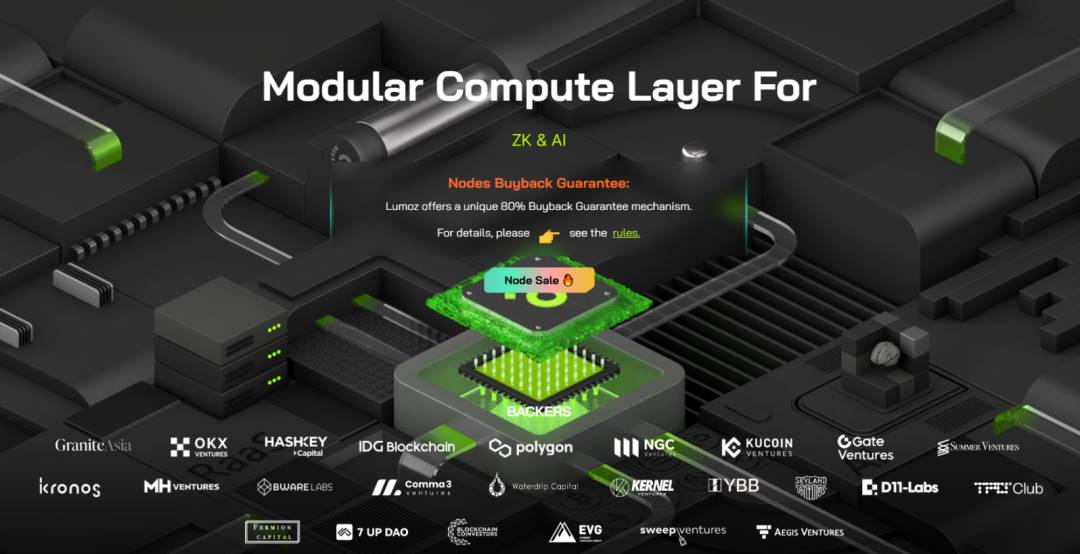
Figure 7 Lumoz https://lumoz.org/
NanFeng, co-founder and CEO of Lumoz, graduated from Tsinghua University and previously worked at ByteDance, deeply involved in the underlying construction and later iterations of multiple projects as a core developer. He is also the founder of Trustless Labs. The core team has been dedicated to ZK technology for nearly five years since 2018. Therefore, from the beginning, Lumoz has been committed to making zero-knowledge computation more efficient and accessible: "Making ZK-Rollup Within Reach."
In the course of Lumoz's development, the team gradually realized the security and centralization issues of cross-chain bridges in the current Rollup track and took action to address them, while also seizing the trend of RaaS track development and launching the ZK RaaS Launch Base, successfully expanding its business scope.
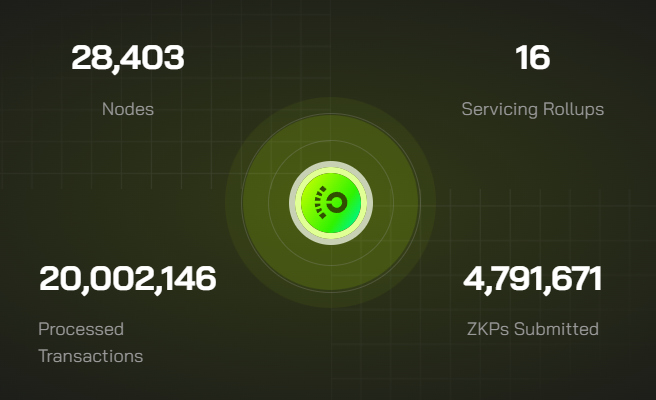
Figure 8 Lumoz ecosystem-related data https://lumoz.org/compute-layer
Lumoz (formerly Opside) officially launched its testnet at the end of May 2023 and operated smoothly for five months with continuous strong participation from the global community. Over 450,000 participants joined the Pre-alpha testnet, resulting in an astonishing 13,580,057 transactions. The testnet showed the participation of over 140 miners and more than 28,000 nodes. In terms of the ecosystem, over 100 high-quality projects applied to participate, with 14 projects successfully launching dedicated zkEVM application chains through the Opside ZK-Rollup LaunchBase and maintaining stable operation. Lumoz is expected to launch its mainnet in Q3. As of now, Lumoz has processed 2 million transactions, submitted over 4.79 million ZKPs, and has 28,000+ nodes. In addition, over 16 projects have been officially audited and have generated customized zkEVM application chains on the Lumoz platform.
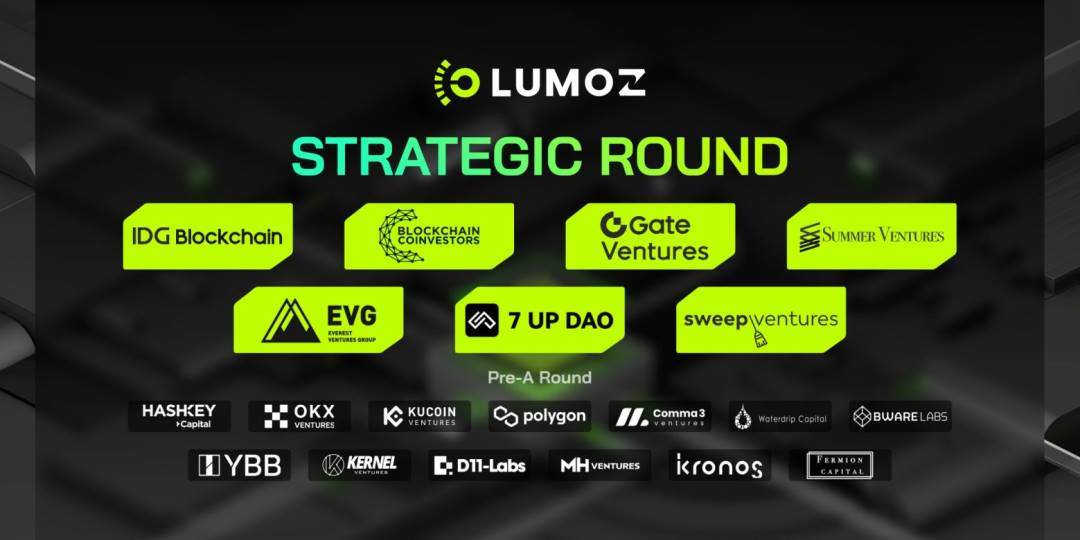
Figure 9 Lumoz strategic financing round, with SevenUPDAO participating
https://mirror.xyz/lumozorg.eth/Fz0dF5HVMdbbI--9lzst60KuKOp5YGbb75Z0RmxiB24
In March 2024, the modular computing layer and ZK-RaaS platform Lumoz completed its first round of financing with a valuation of $1.2 billion. On May 29, 2024, Lumoz officially announced the completion of a new strategic financing round. Participating investors include IDG Blockchain, SevenUpDAO, Sweep Ventures, and others. The specific amount of funds has not been disclosed. The strategic round valued Lumoz at $3 billion, even surpassing Altlayer's current market value of $2.53 billion, demonstrating the high expectations for Lumoz's development prospects. Furthermore, if we compare the current market value of Altlayer with the pre-listing round financing valuation multiplier of 1.4, Lumoz is expected to reach at least over $4.2 billion after listing; if we compare it with Gelato's multiplier of 3, Lumoz's post-listing market value could exceed $9 billion.

Table 2 Financing information for RaaS track projects
Note: The above data is mainly from Rootdata and ICO Analytics, * indicates the lead investor, timestamp is June 16, 2024
III. Lumoz Provides Modular Computing Layer for ZK Rollup
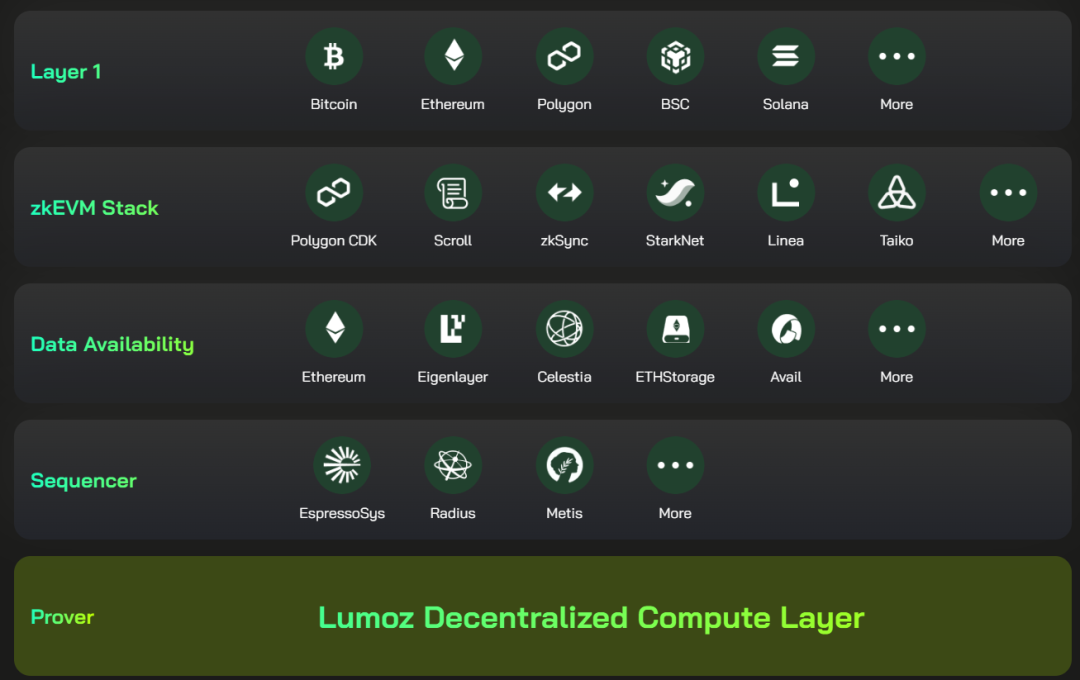
Figure 10 Lumoz as a decentralized modular computing layer
https://lumoz.org/compute-layer
Rollups typically include settlement layer, execution layer, consensus layer, and data availability layer. However, for ZK-Rollup, an additional core module is required, namely the Prover Layer. Currently, Lumoz is the only provider of a modular Prover network in the modular Rollup field. Currently, the ZKP computing power of the Merlin Chain is provided by Lumoz miners. In the future, with the launch of the Lumoz mainnet, the Merlin Chain will be connected to Lumoz's decentralized ZK computing network. This will be a ZK-PoW algorithm network, where anyone can provide computing power to the Merlin Chain and receive Lumoz token rewards.
By combining powerful computing resources with EigenLayer's re-staking mechanism, Lumoz has created an efficient and secure computing service ecosystem. The Lumoz computing layer architecture is a highly integrated and collaborative system, with its main components and functions as follows:
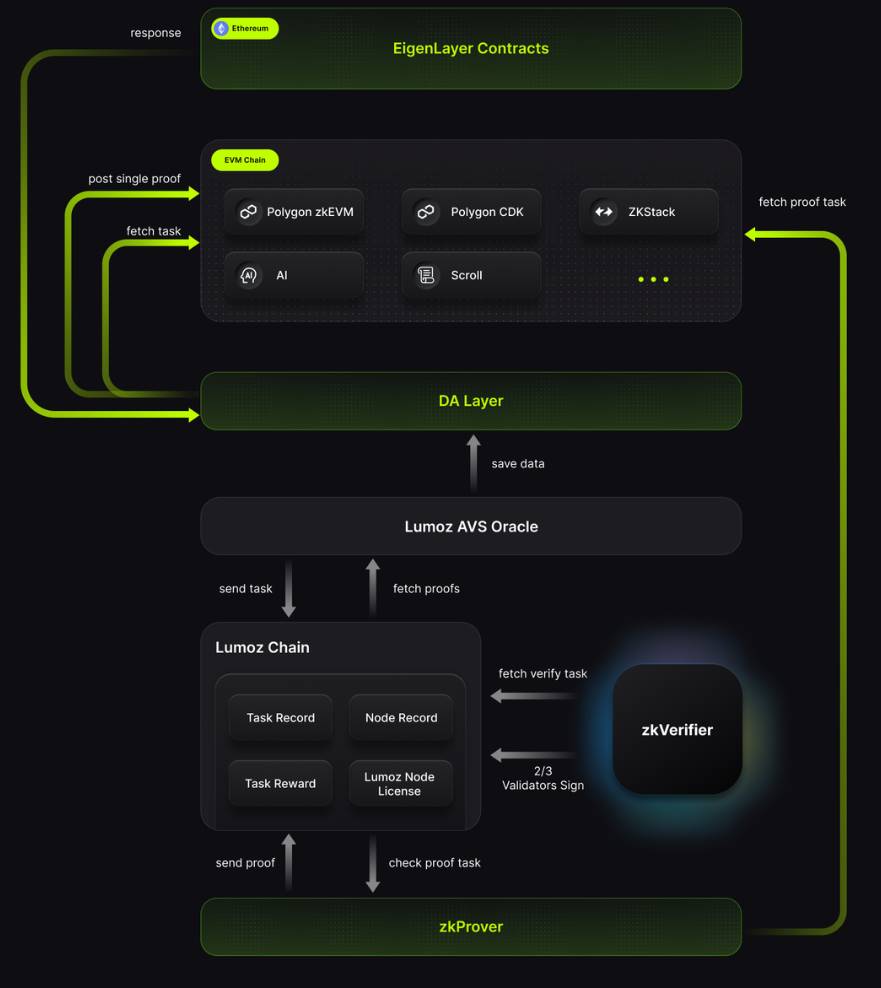
Figure 11 Lumoz computing layer architecture
https://docs.lumoz.org/understand-lumoz/the-avs-computing-layer-based-on-eigenlayer
On Ethereum, using the EigenLayer standard to build Active Verification Services (AVS) to provide trust endorsements and enhance AVS security through re-staking at the feature layer.
EVM chain (L2) supports diverse blockchain environments compatible with the Ethereum Virtual Machine (EVM), such as Polygon zkEVM, Polygon CDK, ZKStack, and Scroll, to ensure broad compatibility and scalability.
Lumoz AVS Oracle is responsible for retrieving and storing data from EVM-compatible chains to ensure high data availability and integrity, providing a solid data foundation for the computing layer.
Lumoz Chain serves as the core management layer of the entire computing layer, responsible for task scheduling, reward allocation, and management of zkProver and zkVerifier, including the process of adding and removing nodes. zkProver is the node that performs specific computing tasks, while zkVerifier is responsible for verifying the execution results.
Lumoz adopts a hybrid consensus mechanism of PoS and PoW in its architecture. PoW is for zkProver, while PoS mainly targets zkVerifier (which may also act as the sequencer for Rollup). This article will first introduce Lumoz's ZK-PoW algorithm in the context of PoW consensus, explaining how it addresses the current challenges of high ZKP computation costs and centralization in ZK Rollup. Then, this article will further analyze its progress in the PoS consensus mechanism.
1. Lumoz's ZK-PoW Algorithm Network Significantly Reduces ZKP Computation Costs
To address the high computation costs and centralization issues of ZKP, Lumoz has proposed the ZK-PoW algorithm. Its main features include:
Reward allocation mechanism for PoW
Lumoz provides a unified ZKP computing power market, encouraging miners to generate ZKPs for these zk-rollups. During the Pre-Alpha testnet phase, based on the PoW algorithm, each Rollup within the Opside block submits a sequence according to certain rules. The PoW reward for the current block is allocated based on the number of registered Rollup slots and the number of batches included in the sequence. Miners can freely choose to participate in ZKP computation for one or multiple Rollups. In the future, each sequence will be priced differently based on the corresponding ZK-Rollup type, the number of Rollup transactions included, gas usage, and other estimated workload factors.
Miners must stake a corresponding amount of tokens for the Rollup in the system contract to submit ZKPs. The rewards miners receive for submitting ZKPs are also distributed based on their staking ratio, thereby preventing malicious behavior of miners submitting ZKPs multiple times.
Two-step submission algorithm for ZKP
First, submit Proofhash. Within a specific time window for a given sequence, multiple miners are allowed to participate in ZKP computation. Each miner does not directly submit the original proof but calculates the proof hash of (proof/address) and submits it to the contract.
Then, submit ZKP. After the time window, miners submit the original proof and verify it based on the previously submitted proof. Miners whose proofs pass the verification process are eligible for PoW rewards, which are distributed proportionally based on the amount they staked for participation.
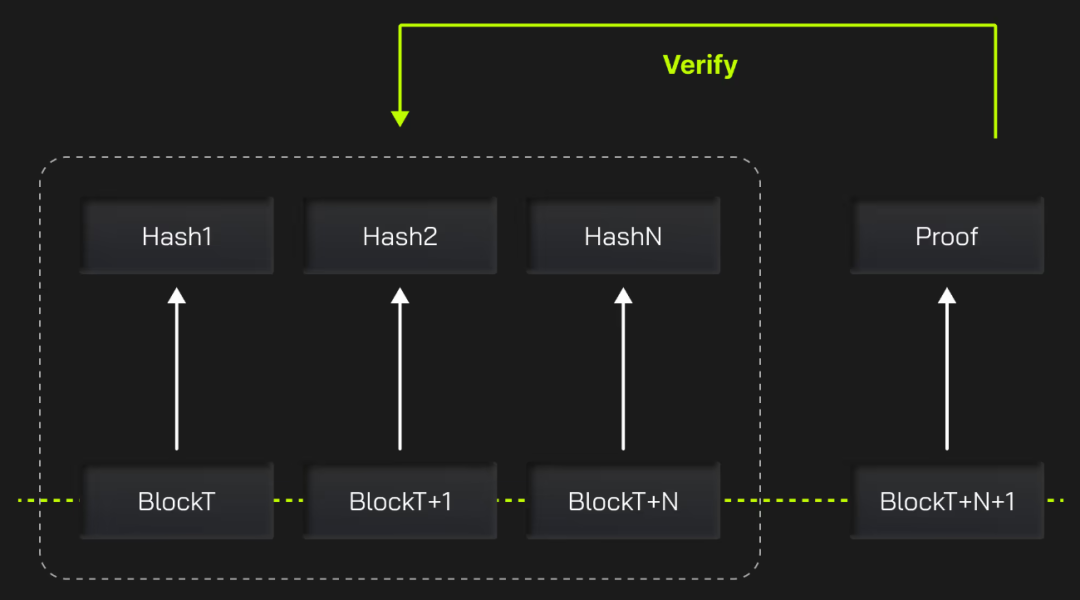
Figure 12 Two-step submission algorithm for ZKP
https://lumoz.org/compute-layer
Lumoz's two-step submission algorithm for ZKPs cleverly adopts a model of submit first, then verify, eliminating unnecessary proof and address aggregation calculations. Moreover, the two-step submission algorithm achieves parallel ZKP computation and sequential submission, allowing miners to execute multiple ZKP generation tasks concurrently, significantly speeding up the generation efficiency of ZKPs. The Lumoz team has also optimized the ZKP recursive aggregation algorithm, maximizing the use of cluster resources and further improving the speed of ZKP computation.
In a real stress test environment, miners have a cluster of 20 machines, including 128-core CPUs and 1TB of RAM. The test transaction rate stabilized at around 27.8 TPS in approximately 40 minutes. Under the same conditions, Lumoz reduced the average confirmation time of transactions from about 5-6 minutes to about 3 minutes, thereby increasing ZKP generation efficiency by approximately 80%. In the future, as more ZK-rollups and miners join the ZK computing power market, the efficiency improvement brought by Lumoz's PoW algorithm will be even more significant.
ZK-PoW V2.0 further optimizes the computation process
Compared to V1.0, the 2.0 version:
Splits the original service into three sub-modules, each responsible for proof generation, proof management, and proof submission, making the structure clearer, less coupled, and more robust.
The proof Generator module added a startBatch parameter, making it easier for new miners to keep up with mining progress.
The proof Manager module has been improved compared to the old version. When miner services restart or other reasons cause proof submission to fail, proofs are promptly resent to ensure miner interests. The resend mechanism not only addresses failed proof submissions but also handles all cases of failed or unsubmitted proof submissions, ensuring the security of the Rollup chain.
The Proof Sender module uses three thread-safe priority caches to implement two-step transaction submission. Compared to previous versions, it reduces the use of global locks, ensures timely submission of proofs at lower heights, and protects miner interests. Additionally, the overall service process is clearer, reducing the number of threads and resource consumption during program execution.
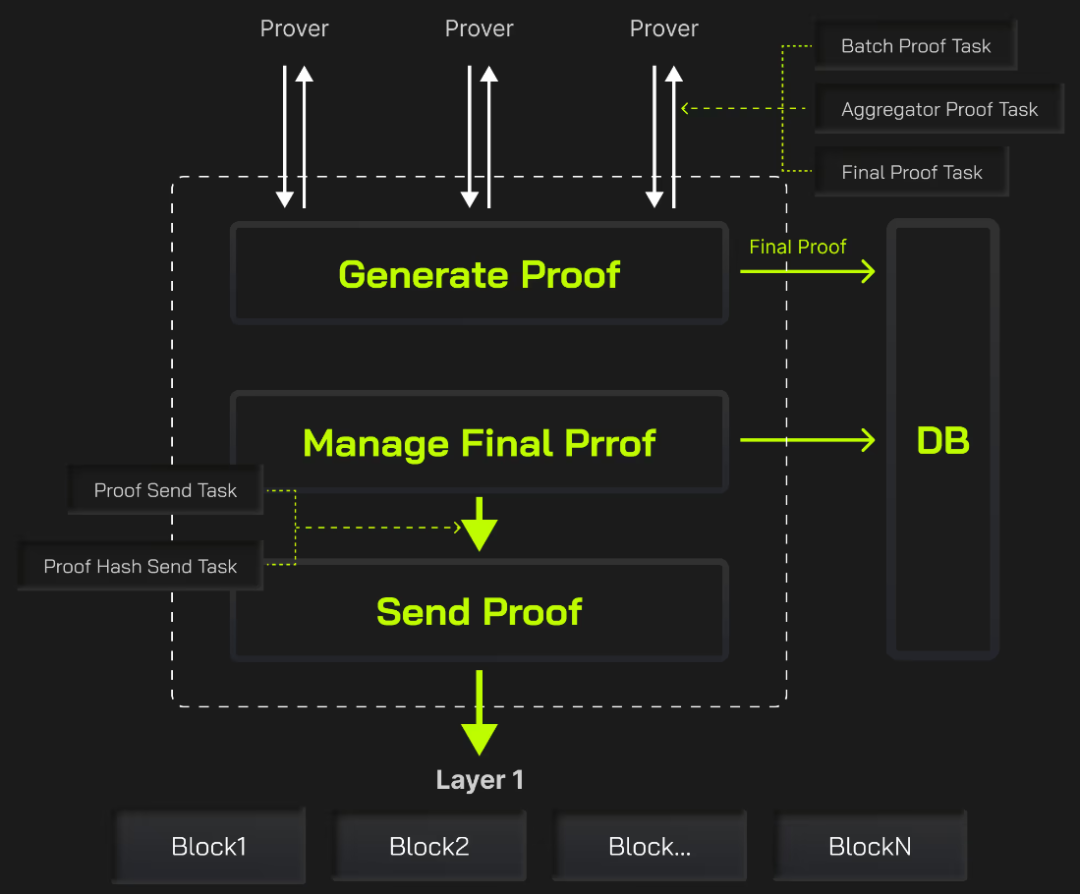
Figure 13 ZK-PoW V2.0 Architecture
https://mirror.xyz/lumozorg.eth/zZy2munlvNY7D4DG6lpcccrx1IZTJ7yb3jXOwd1O9Hg
Pressure test results: In version 2.0, using 10 machines with 64 cores, 566 batches of proofs were completed in 7 hours, 38 minutes, and 40 seconds, with an average time of 48.62 seconds per proof. In a multi-miner scenario, the overall efficiency of zk proof generation in version 2.0 increased by 50% compared to version 1.0.
2. Introduction of zkVerifier Node Verification Mechanism, Establishing a Decentralized and Anti-censorship Verification Network
The Lumoz network bears the critical responsibility of managing the entire network's data input and output. To ensure the security, accuracy, and decentralization of the data processing process and its results, the Lumoz network introduces a node verification mechanism, with zkVerifier verifying the ZKPs generated by zkProver. The specific workflow is as follows:
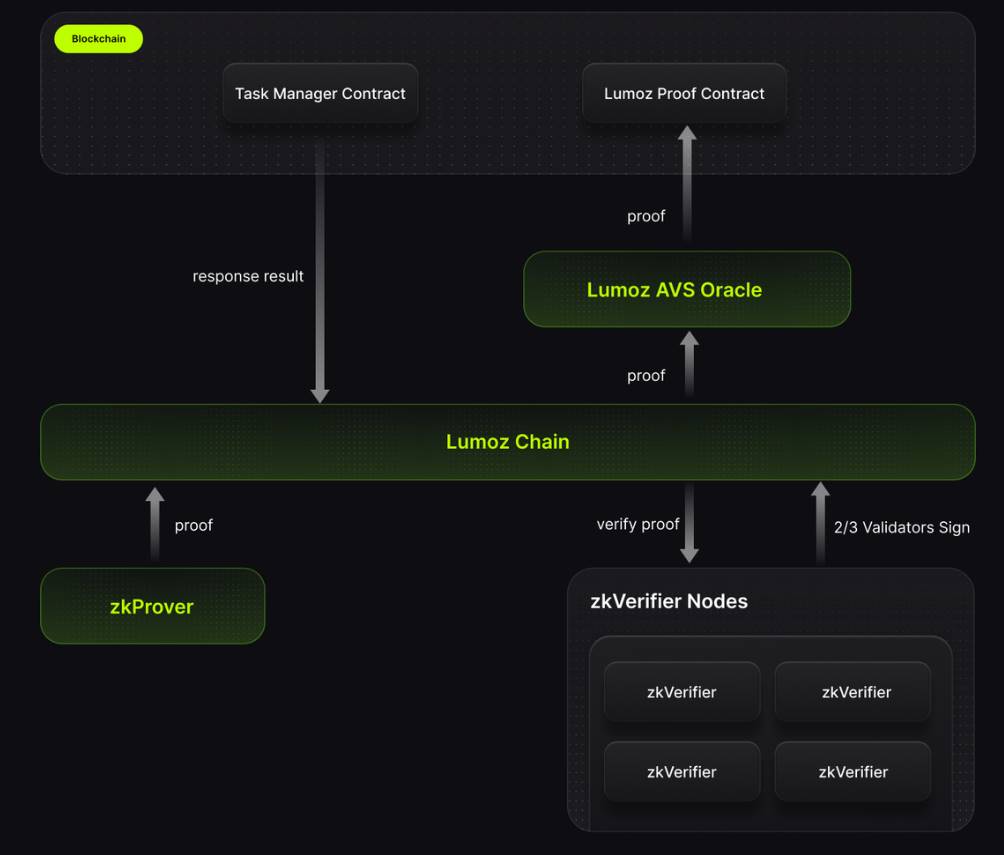
Figure 14 zkVerifier Node Verification Mechanism
https://docs.lumoz.org/zkVerifier-node-explained/how-do-zkverifier-node-work
First, after the proof generated by zkProver is submitted to the Lumoz chain, the Lumoz chain sends the verification task to multiple zkVerifier nodes, which independently execute distributed verification. Second, at least two-thirds of zkVerifier nodes confirm the validity of the proof, ensuring the authority and consistency of the verification results. Finally, valid proofs and their results are transmitted back to the Lumoz proof contract on the blockchain by Lumoz AVS Oracle, and the task results are recorded and responded to the Lumoz chain through the task manager contract.
The hardware requirements for zkVerifier nodes are relatively low, allowing more users to participate in the Lumoz ecosystem, further increasing the decentralization of the Lumoz network.

Figure 15 zkProver Node Hardware Requirements
https://docs.lumoz.org/purchase-zkverifier-node-and-set-up/set-up-node
zkVerifier Node Sale will open soon
In terms of the admission mechanism for zkVerifier nodes, Lumoz introduces a licensing system: the license is the official recognition of the identity of zkVerifier nodes and is a necessary binding condition for setting up zkVerifier nodes. These licenses exist in the form of NFTs, ensuring the uniqueness and non-replicability of each license. If you do not want to run the node yourself, you can delegate ezMOZ tokens or licenses to other node operators through the delegation mechanism while continuing to receive rewards. If needed, licenses can also be freely transferred between users.
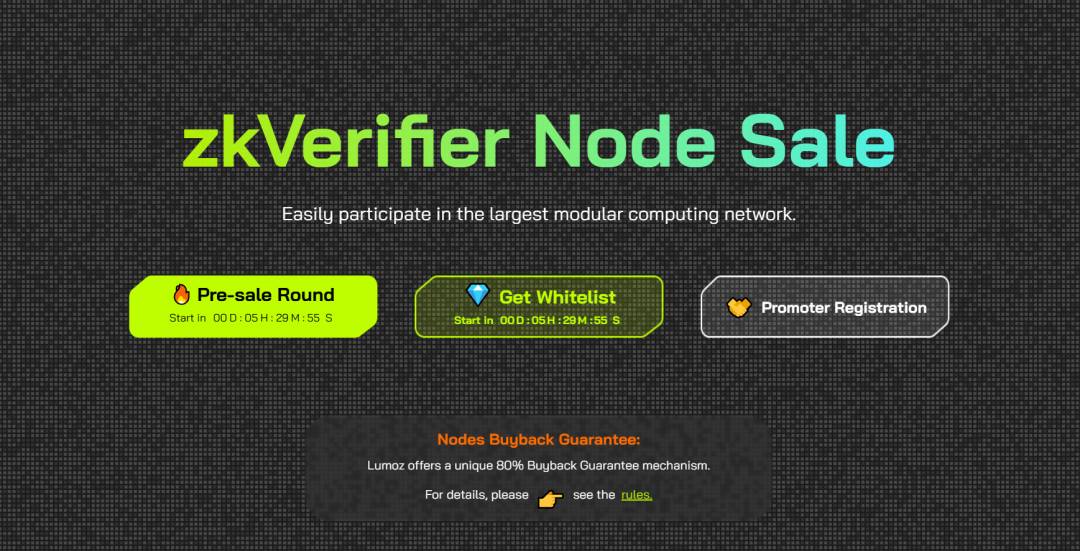
Figure 16 zkVerifier Node Sale https://node.lumoz.org/
The sale of zkVerifier node licenses will officially begin on June 17, 2024. It is understood that zkVerifier nodes will receive 40 million Lumoz points before the TGE, with 1 million points linearly unlocked every day from June 25 to August 4. These points can be exchanged for mainnet tokens after the TGE. After the TGE, the project will continue to empower zkVerifier nodes, with a continuous linear unlock of 25% of Lumoz tokens over 36 months, and the opportunity to continue participating in potential airdrops of Lumoz ecosystem projects.
According to Lumoz's latest policy, there are a total of 100,000 licenses, divided into 10 different price tiers, and will be sold on a first-come, first-served basis, with higher prices for later purchases, so the earlier the purchase, the higher the return. This sale is divided into three phases: the presale phase (opens on 2024-06-17 15:00 UTC+8), whitelist acquisition phase (opens on 2024-06-17 15:00 UTC+8), whitelist sale phase (opens on 2024-06-25 15:00 UTC+8), and public sale phase (opens on 2024-07-03 15:00 UTC+8). In the public sale phase, all users can purchase licenses.
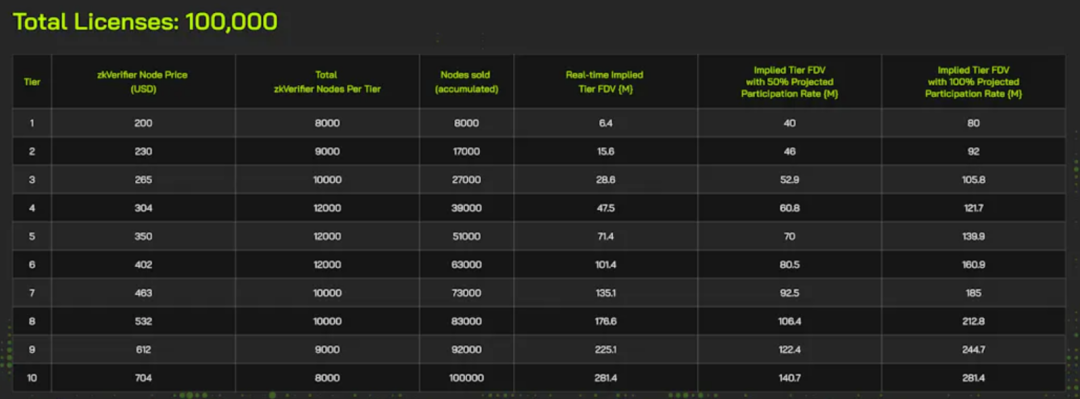
Figure 17 Lumoz License Tiers
https://docs.lumoz.org/purchase-zkverifier-node-and-set-up/license-tiers
Team bonus system for node points activities
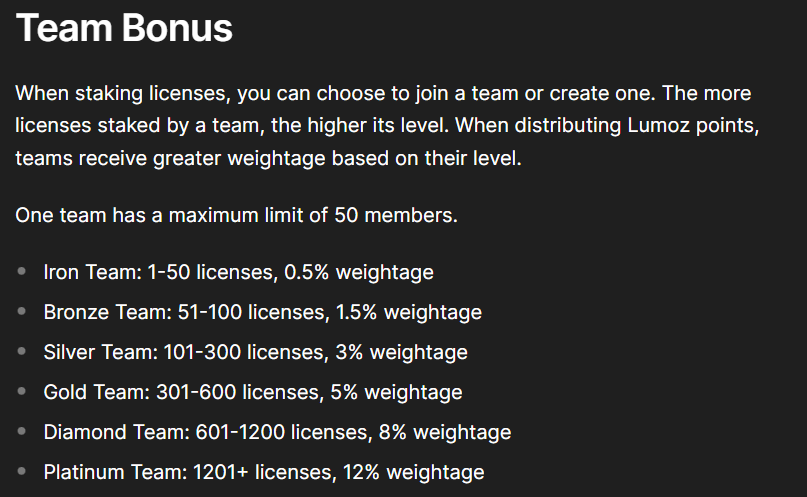
Figure 18 Team Participation Mechanism for zkVerifier Node Points Campaign
https://docs.lumoz.org/zkverifier-lumoz-points-campaign
When users pledge licenses, they can choose to join a team or create a team, with a maximum of 50 members per team. The more licenses a team holds, the higher its level. When allocating Lumoz points, teams will receive greater weight based on their level. Lumoz adopts this fission design to attract more users and investors.
Refund Mechanism Ensures User Interests
In addition, to maximize the protection of the rights and interests of the global community users, Lumoz has also established a refund mechanism. The refund window will open 6 months after the Token Generation Event (TGE) begins. The duration of the window is to be determined. If users are dissatisfied for any reason, they can apply for a refund. Lumoz will unconditionally refund 80% of the payment amount for purchasing nodes. Users must return all generated tokens and NFTs (non-fungible tokens).
Important Source of Revenue Before TGE
The sale of Lumoz's zkVerifier nodes has become an important source of revenue. Early revenue in blockchain projects is crucial for the project's continued development and success. This not only helps provide necessary financial support for the project but also enhances the confidence of investors and community members in the project. It is worth noting that blockchain projects cannot rely solely on Initial Exchange Offerings (IEOs) for revenue. Although IEOs are an effective way of financing, they are not the only option. Over-reliance on IEOs may lead to a lack of flexibility in funding support for the project's future development and may also increase the project's risk.
Specifically, the impact of Lumoz's zkVerifier node sale on the project's expectations is that it demonstrates Lumoz's confidence and commitment to future development. By selling nodes, the project sends a positive signal to the outside world that it has sufficient funds and resources to drive its long-term development. This helps attract more investors and partners to join the project and contribute to its success.
At the same time, the sale of nodes also reflects the community value and stickiness. By purchasing nodes, users become part of the project community and establish a closer connection with the project. This connection not only enhances users' sense of belonging and loyalty to the project but also promotes communication and collaboration among community members. An active and valuable community is crucial for the long-term development of the project.
4. Lumoz RaaS Launch Base Highly Compatible with Mainstream ZK Rollups Technology Stack
Rollup as a Service (RaaS) is a product for launching customized Rollups for new blockchain applications. This product is similar to software-as-a-service (SaaS) products, where users do not need to maintain or host any part of the service product, thus eliminating the need for complex software and hardware management.
From the perspective of whether coding is required, RaaS projects can be divided into two categories: SDK and no-code solutions. SDK solutions provide developers with a complete set of general software development kits, making deploying Rollups as simple as deploying smart contracts; no-code solutions, as the name suggests, allow for deploying Rollups without writing a single line of code (one-click chain launch). Projects such as OP Stack, Rollkit, Dymension, Sovereign, and Stackr belong to the SDK category. Projects that deploy Rollups without code include Lumoz, AltLayer, Eclipse, and Caldera.
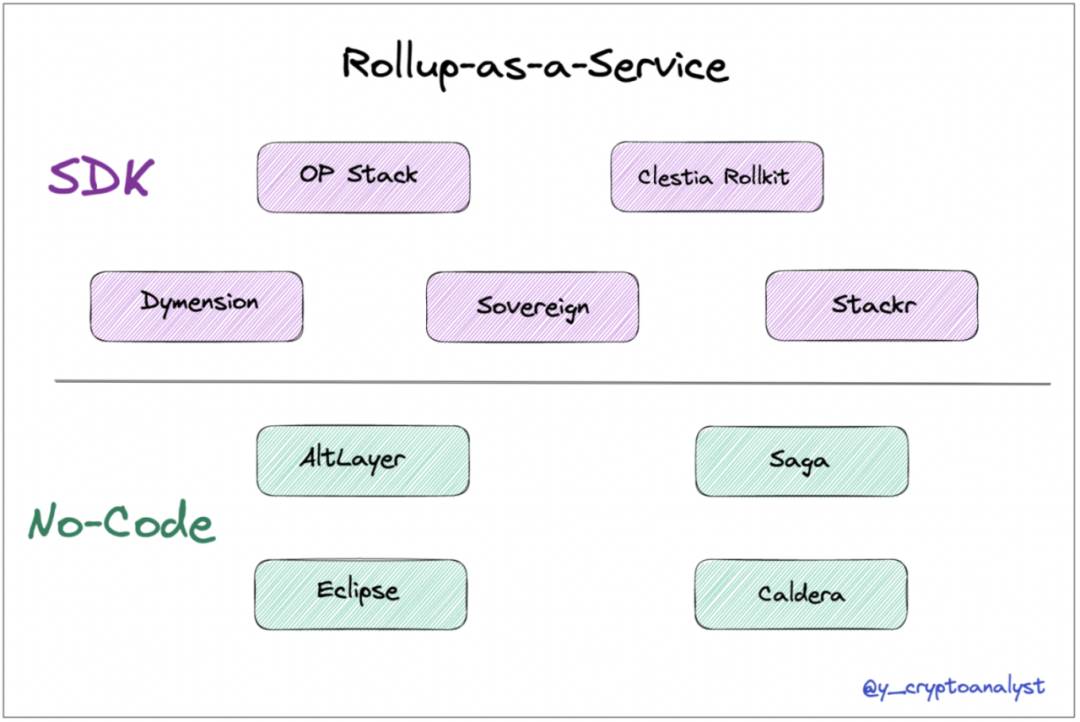
Figure 19 RaaS projects can be divided into two categories
https://foresightnews.pro/article/detail/27089
In the RaaS field, there are already various projects such as Altlayer and Gelato that can achieve one-click chain launch without code. The highlight of Lumoz RaaS Launch Base is that Lumoz integrates mainstream Rollup solutions in the blockchain industry such as Polygon zkEVM, zkSync, Scroll, and Starknet, making it the most compatible project with the ZK Rollups technology stack on the market, specifically addressing the compatibility pain points between ZK technology and EVM in the ZK Rollup field.
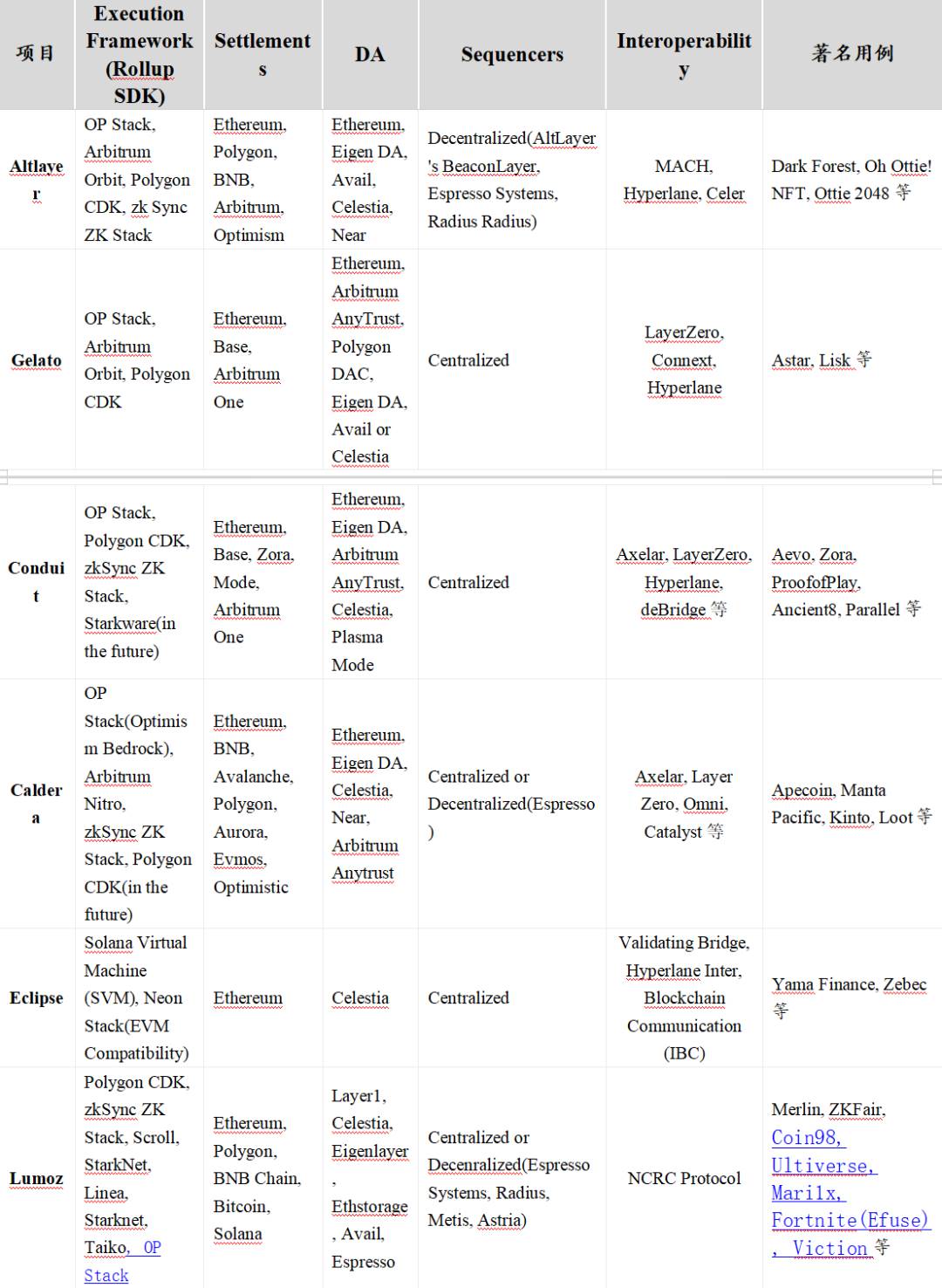
Table 3 Technology stacks supported by mainstream RaaS projects
Note: Data mainly comes from the official websites and whitepapers of various projects, and references from articles on the internet.
From the table above, it can also be seen that Lumoz has collaborated with many projects in various modules of Rollup. For example, in addition to Layer1, Lumoz has also integrated third-party DA layer projects such as Celestia, Eigenlayer, Ethstorage, Avail, and Espresso, and through collaborations with Espresso Systems, Radius, Metis, and Astria, it can provide customers with decentralized sorter options.
According to Vitalik's standards, zkEVM can be divided into the following types:

Figure 20 Vitalik's "Different Types of zkEVM"
https://learnblockchain.cn/article/6369
Type1 zkEVM: Fully equivalent to Ethereum
Type2 zkEVM: Fully compatible with the EVM Ethereum Virtual Machine (formerly there was Type2.5, but now it seems to have basically merged with Type2)
Type3 zkEVM: Almost compatible with the EVM Ethereum Virtual Machine
Type4 zkEVM: Compatible with high-level languages
The frameworks supported by Lumoz include precisely these types of zkEVM, providing customers with a more diverse selection.
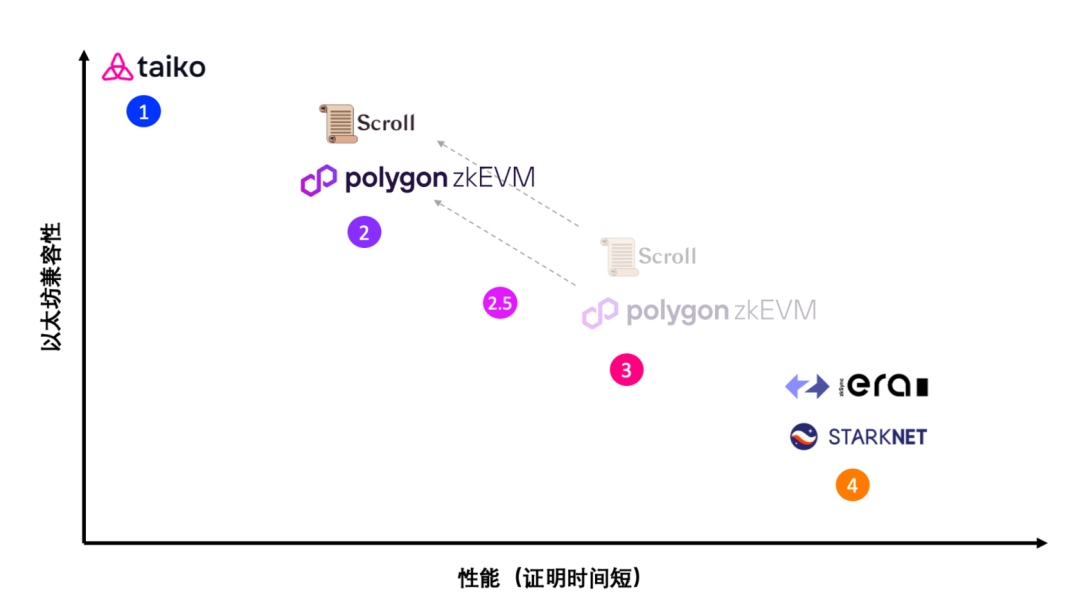
Figure 21 Categorization of mainstream ZK Rollup projects
https://learnblockchain.cn/article/6369
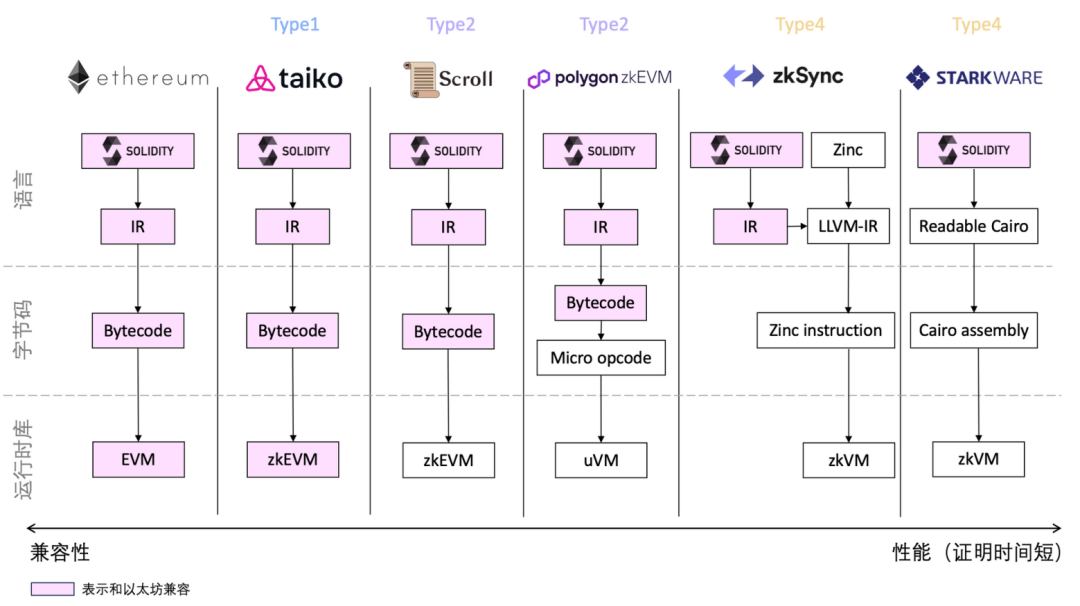
Figure 22 Mainstream zkEVM projects
https://learnblockchain.cn/article/6369
1. One-Click Chain Launch to Meet Customized ZK Rollup Needs for Projects
Users can independently select various components required for Layer2 in their Launch Base, including SDKs, settlement layers, data availability layers, sorters, and more, without any coding during the operation, greatly reducing the difficulty of issuing ZK Rollups and allowing teams to focus on non-technical aspects such as ecosystem operations.
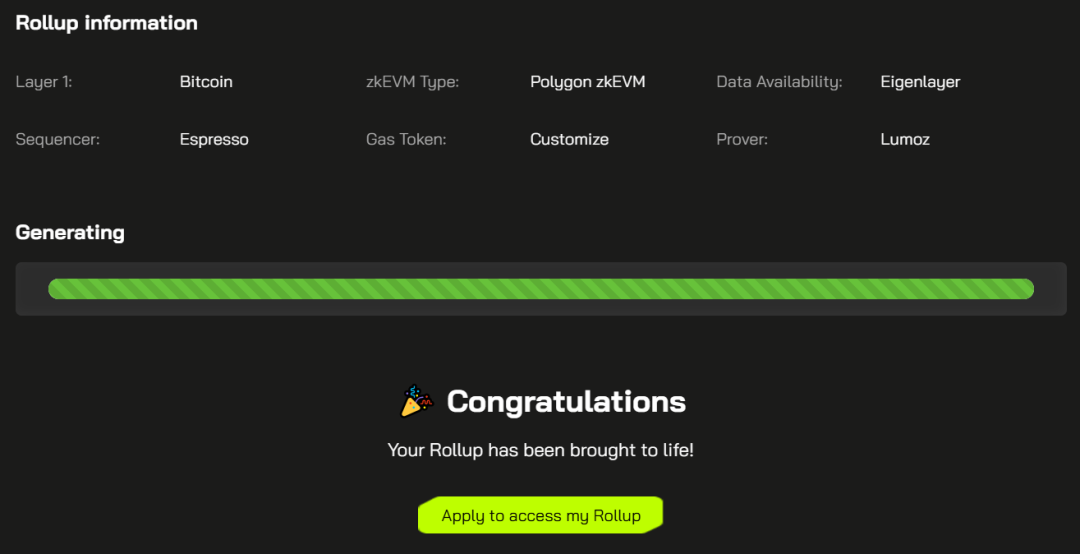
Figure 23 Lumoz ZK-RaaS Launch Base One-Click Chain Launch
https://lumoz.org/launchbase
For example, some of the current clients using Lumoz RaaS services include:
ZKFair is the first community ZK-L2 based on Polygon CDK and Celestia DA, with technical support provided by ZK-RaaS provider Lumoz. ZKFair uses the stablecoin USDC as the gas token. ZKFair ensures 100% EVM compatibility, excellent performance, low fees, and strong security. ZKFair is a 100% community-owned, community-driven experimental L2 network.
Merlin Chain is a Bitcoin Layer 2 that integrates ZK-Rollup network, decentralized oracle network, data availability, and on-chain BTC anti-fraud modules, dedicated to empowering native assets, protocols, and products of Bitcoin on Layer1 through its Layer 2 network, injecting vitality into the Bitcoin ecosystem.
2. Support for Op Stack + ZK Fraud Proof Layer 2 Architecture
Furthermore, on April 18, 2024, Lumoz announced that its modular computation layer will support the Op Stack + ZK Fraud Proof Layer 2 architecture.
OP Stack is a general development stack for building L2 blockchain ecosystems.
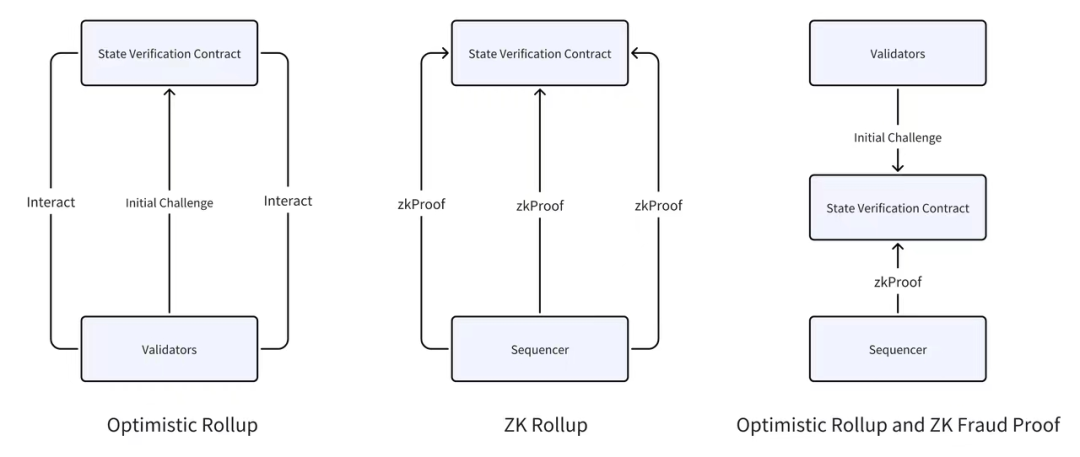
Figure 24 Op Stack + ZK Fraud Proof Layer 2 Architecture
https://mirror.xyz/lumozorg.eth/eFpFnP40loyL3idRitTT_MNB3kW8R_6arZ7bgtmoRlc
Similar to the ZK Optimistic Rollup model proposed by Steven Li and AltLayer, the Op Stack + ZK Fraud Proof architecture is a new design that integrates validity proofs based on zero-knowledge proofs into optimistic Rollup technology. When challengers point out that the sequencer has submitted incorrect data, they submit a challenge to L1. The sequencer must generate the corresponding ZK proof within a limited challenge period and submit it to the Layer1 contract for verification. If the verification result indicates that the data is valid, the challenge is invalid; otherwise, the challenge is successful. This scheme combines the advantages of Optimistic Rollup and ZK Rollup, maintaining the low-cost characteristic while effectively reducing the waiting time.
V. NCRC Protocol Implements Trustless ZK-Rollup
Native Cross-Chain Bridge
As mentioned earlier, third-party bridges may provide a cheaper and faster cross-chain experience, but they introduce additional trust costs and security risks. In fact, each ZK-Rollup comes with an L1>L2 bridge, which Lumoz calls the Native Bridge. Unlike third-party bridges using liquidity-based solutions, the Native Bridge operates as a unique "mint-burn" cross-chain mechanism. It guarantees security through zero-knowledge proofs while maintaining trustworthiness. To achieve NCRC between multiple Rollups, the following two prerequisites must be met:
These Rollups must belong to the ZK-Rollup type.
These Rollups must be on the same L1.
Rollups that meet these two conditions theoretically have the same security level as the underlying L1. Similarly, the security level of the Native Bridge between these Rollups is the same, and they do not require trust. All NCRC transactions are verified through validity proofs, which are the basic source of security for NCRC.
1. RRC Contract Provides Data Retrieval Service
ZK Rollups cannot communicate with each other, primarily because their contracts on L1 (Ethereum mainnet) are unrelated. They are still unaware of each other's existence and cannot communicate directly through the native Rollup bridge. Therefore, Lumoz will deploy an RRC contract (Rollup Recognition Contract) on each L1 layer to enable Rollups to discover and identify each other. The RRC is responsible for managing all participating zk-rollups in NCRC, including adding, pausing, and exiting Rollups. Each Rollup in the RRC is assigned a dedicated Rollup ID.
2. Process of Cross-Rollup Transactions via Native Bridge Hides Underlying Complexity, Optimizing User Experience
For users, the operation of NCRC is identical to the native network bridge of Rollup. Throughout the cross-chain process, the user's assets flow through the following path: Rollup1 -> Rollup1's L1 bridge contract -> Rollup2's L1 bridge contract -> Rollup2. In other words, the user's assets do not pass through any third-party protocols, only through the native bridge of Rollup. The entire process is secure and trustless.

Figure 25 Process of Cross-Rollup Transactions via Native Bridge
https://mirror.xyz/lumozorg.eth/0P5S75pYf4GtjYG4tka4whLHI7a1YC-YVS0uzgaSlzI
When a user performs a cross-chain operation on Rollup1 and selects Rollup2 as the destination, the technical process actually involves three entities: Rollup1, L1, and Rollup2. However, the user does not need to be aware of the presence of L1 in this process; their experience is simply crossing from Rollup1 to Rollup2 directly. The reality behind the scenes is that cross-chain assets undergo two bridging operations on L1, creating a seamless connection from Rollup1 to Rollup2 in the user's perception. In this process, the operations on L1 are automatically handled, and users do not need to perform any additional actions. From the user's perspective, their current Rollup can perform cross-chain operations to L1 and any other Rollup. This design enhances the smoothness of the user experience while hiding the underlying complexity.
VI. Lumoz's Dual-Token Economic Model
If we disregard zkVerifier's License, Lumoz adopts a dual-token economic model.
1. Utility Token MOZ
Transaction fees (Gas): All transactions within the Lumoz network require MOZ tokens as transaction fees, ensuring the secure operation of the network and smooth transaction processing.
Resource usage fees: Users need to pay MOZ tokens as resource usage fees when using zero-knowledge proof (ZKP) computation and artificial intelligence (AI) services provided by the Lumoz network, providing necessary economic incentives for the network.
2. Equity Token esMOZ
Incentive Participation: The esMOZ token serves as a reward for nodes providing computational power, security, and stability to the Lumoz network, playing a role in incentivizing and attracting participants to join the network. This incentive mechanism helps enhance the security and stability of the network.
Delegating zkVerifier Nodes: Users can use esMOZ tokens to participate in delegation, selecting trusted nodes for delegated voting, promoting decentralized governance of the network, and also receiving rewards from the network.
Redemption Mechanism: esMOZ tokens can be exchanged for MOZ tokens at different redemption periods and redemption rates, providing users with flexible redemption options. This redemption mechanism provides users with more flexibility and choice.
VII. Industry Outlook
1. Promising Development Prospects for RaaS Track
A significant trend in the future of the crypto industry is the application of multi-chains and multi-Rollups. With the gradual increase in projects, these projects will tend to look for public chains that offer better performance, lower costs, and even customized services. The rise of RaaS lays the foundation for meeting this demand.
Firstly, from a customization perspective, RaaS allows developers to build and utilize applications based on Rollups more flexibly through modular Rollups, providing the flexibility to meet specific business needs and injecting more innovation into the entire ecosystem.
Secondly, from a performance analysis perspective, Rollup technology, as a Layer 2 solution, can significantly increase the throughput of the Ethereum network and reduce costs. In this context, RaaS can ensure that developers can securely deploy their applications while reducing costs. The implementation of the Cancun upgrade has brought significant changes to Ethereum L2, especially the introduction of "blob transactions," allowing L2 transactions to be stored in cheaper and larger blobs, reducing the cost of each L2 transaction and further increasing transaction speed and throughput.
Finally, from a business model perspective, RaaS demonstrates extremely broad development prospects. With the increasing number of on-chain applications, the congestion problem of the Ethereum main network will become more severe, which will undoubtedly drive the continuous growth of demand for Rollups and RaaS.
2. ZK Rollup Will Become the Mainstream Solution for Rollups
Vitalik has repeatedly stated that ZK Rollup will replace Optimistic Rollup and become the long-term Ethereum scaling solution. The advantages and disadvantages of ZK Rollup compared to Optimistic Rollup have been described earlier, and with the continuous improvement of ZK technology and better compatibility with EVM, it is foreseeable that ZK Rollup will become the mainstream solution for Rollups. Of course, there may also be more scaling solutions that combine the advantages of Optimistic Rollup and ZK Rollup, such as OP Stack+ZK Fraud Proof.
3. Community Operations and Ecosystem Building May Replace Technology as the Main Challenge in Building Rollups
The rise of RaaS makes it easier and faster for developers to build and use Rollups, and technology is no longer the main obstacle to building Rollups (although technology remains an important factor in the Rollup construction process). In addition, emerging Rollups such as Base, Manta Pacific, and Blast have successfully gained rapid market recognition by using existing tools to build Rollups at low cost and shifting their project focus to ecosystem development. Some analysis suggests that the rise of these emerging Rollups not only sets a benchmark for the market but also provides examples for traditional applications to transition to L2.
VIII. Facing Risks
Firstly, although Lumoz has successfully attracted widespread participation from the crypto community during the Pre-Alpha and Alpha testnet stages, the recent Node Sale truly requires users to spend real money to buy in. If the operation of this node sale is not handled well, it may be detrimental to the ecological development of Lumoz. Additionally, it is noted that Lumoz has not yet disclosed an updated token distribution plan, and it cannot be ruled out that participants may purchase nodes and receive too little income. Due diligence is required. However, since zkVerifier nodes allow refunds, delegation, and transfers, even if there is indeed a loss, participants can control their losses within a certain range.
IX. Conclusion
Lumoz has effectively addressed the three major pain points faced by the ZK Rollup track with its modular computation layer, ZK RaaS, and NCRC native cross-chain bridge protocol, making it stand out as a pioneer and leader in the ZK Rollup industry. It is confident that Lumoz will continue to demonstrate its leadership in the future, driving the widespread application and popularization of ZK-Rollup technology.
免责声明:本文章仅代表作者个人观点,不代表本平台的立场和观点。本文章仅供信息分享,不构成对任何人的任何投资建议。用户与作者之间的任何争议,与本平台无关。如网页中刊载的文章或图片涉及侵权,请提供相关的权利证明和身份证明发送邮件到support@aicoin.com,本平台相关工作人员将会进行核查。




